What is Boop Ransomware virus
Boop Ransomware is a serious malware infection, categorized as ransomware. File encoding malware is not something every person has heard of, and if you have just encountered it now, you’ll learn quickly how how much damage it might do. When files are encrypted using a strong encryption algorithm, you will not be able to open them as they’ll be locked. Because ransomware victims face permanent file loss, this type of threat is very dangerous to have. A decryption tool will be offered to you by cyber criminals but complying with the requests might not be the greatest option. 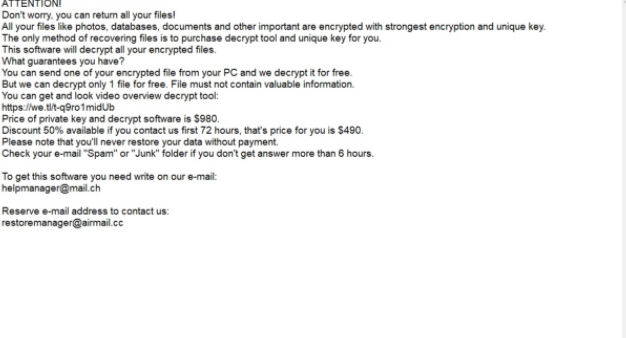
There is a possibility that your data won’t get decrypted even after paying so you could just end up spending your money for nothing. Why would people who encrypted your data the first place help you restore them when they could just take the money you give them. Secondly, your money would also support their future activities, such as more ransomware. File encrypting malware already costs millions to businesses, do you really want to support that. When victims pay, ransomware becomes more and more profitable, thus drawing more people who are lured by easy money. Consider investing that demanded money into backup instead because you might end up in a situation where you face data loss again. If backup was made before you caught the infection, you can just uninstall Boop Ransomware virus and proceed to file recovery. Data encoding malware distribution methods might not be known to you, and we’ll explain the most frequent methods in the below paragraphs.
Ransomware distribution methods
You could generally see ransomware attached to emails as an attachment or on suspicious download page. Since a lot of users aren’t cautious about opening email attachments or downloading files from sources that are less then trustworthy, file encrypting malicious software distributors do not have the necessity to use ways that are more sophisticated. Nevertheless, some ransomware could be spread using more elaborate ways, which require more time and effort. All crooks need to do is attach an infected file to an email, write a semi-convincing text, and falsely claim to be from a trustworthy company/organization. Frequently, the emails will mention money, which people are more likely to take seriously. It is somewhat frequent that you will see big company names like Amazon used, for example, if Amazon sent an email with a receipt for a purchase that the person didn’t make, he/she would open the attachment immediately. So as to shield yourself from this, there are certain things you ought to do when dealing with emails. See if you know the sender before opening the file attached to the email, and if they’re not known to you, investigate who they are. If the sender turns out to be someone you know, do not rush into opening the file, first cautiously check the email address. Glaring grammar mistakes are also a sign. Take note of how you are addressed, if it’s a sender with whom you’ve had business before, they will always greet you by your name, instead of a typical Customer or Member. data encoding malware may also use out-of-date software on your device to infect. Those vulnerabilities in software are usually fixed quickly after their discovery so that they cannot be used by malware. As has been shown by WannaCry, however, not everyone is that quick to install those updates for their software. You are recommended to update your programs, whenever a patch becomes available. Patches could install automatically, if you do not want to bother with them every time.
What does it do
If the data encrypting malware gets into your computer, it will look for specific file types and once it has found them, it’ll encode them. If you didn’t realize the encryption process, you will definitely know something’s up when you cannot open your files. Files that have been encoded will have a strange file extension, which commonly assist people in recognizing which data encrypting malware they are dealing with. In many cases, file decryption may not be possible because the encryption algorithms used in encryption could be not restorable. In the ransom note, cyber criminals will tell you that they’ve encrypted your data, and offer you a method to decrypt them. The method they suggest involves you buying their decryptor. The note should plainly show the price for the decryption tool but if it doesn’t, it will give you an email address to contact the crooks to set up a price. Obviously, we do not recommend you pay, for the reasons already discussed. When any of the other option doesn’t help, only then you ought to even consider paying. Try to recall whether you’ve ever made backup, your files could be stored somewhere. Or, if you are lucky, a free decryption utility might be available. A free decryptors may be available, if someone was able to decrypt the file encoding malware. Before you decide to pay, consider that option. Using part of that money to purchase some kind of backup might turn out to be better. If you have saved your files somewhere, you can go get them after you eliminate Boop Ransomware virus. If you wish to avoid file encoding malicious program in the future, become aware of means it might infect your system. At the very least, don’t open email attachments randomly, keep your software updated, and only download from sources you know to be safe.
Boop Ransomware removal
Obtain an anti-malware software because it’ll be necessary to get rid of the file encrypting malware if it still remains. If you attempt to uninstall Boop Ransomware manually, it might bring about additional damage so that isn’t recommended. Opting to use an anti-malware software is a smarter decision. This program is useful to have on the device because it will not only make sure to get rid of this threat but also prevent one from entering in the future. Look into which malware removal tool would best suit what you require, download it, and authorize it to scan your system for the infection once you install it. Don’t expect the anti-malware software to help you in data recovery, because it won’t be able to do that. If you’re sure your device is clean, go unlock Boop Ransomware files from backup.
Offers
Download Removal Toolto scan for Boop RansomwareUse our recommended removal tool to scan for Boop Ransomware. Trial version of provides detection of computer threats like Boop Ransomware and assists in its removal for FREE. You can delete detected registry entries, files and processes yourself or purchase a full version.
More information about SpyWarrior and Uninstall Instructions. Please review SpyWarrior EULA and Privacy Policy. SpyWarrior scanner is free. If it detects a malware, purchase its full version to remove it.

WiperSoft Review Details WiperSoft (www.wipersoft.com) is a security tool that provides real-time security from potential threats. Nowadays, many users tend to download free software from the Intern ...
Download|more


Is MacKeeper a virus? MacKeeper is not a virus, nor is it a scam. While there are various opinions about the program on the Internet, a lot of the people who so notoriously hate the program have neve ...
Download|more


While the creators of MalwareBytes anti-malware have not been in this business for long time, they make up for it with their enthusiastic approach. Statistic from such websites like CNET shows that th ...
Download|more
Quick Menu
Step 1. Delete Boop Ransomware using Safe Mode with Networking.
Remove Boop Ransomware from Windows 7/Windows Vista/Windows XP
- Click on Start and select Shutdown.
- Choose Restart and click OK.

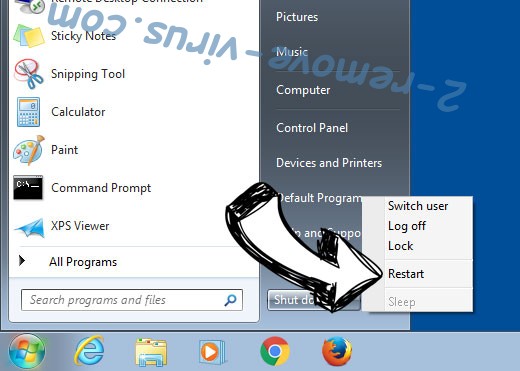
- Start tapping F8 when your PC starts loading.
- Under Advanced Boot Options, choose Safe Mode with Networking.

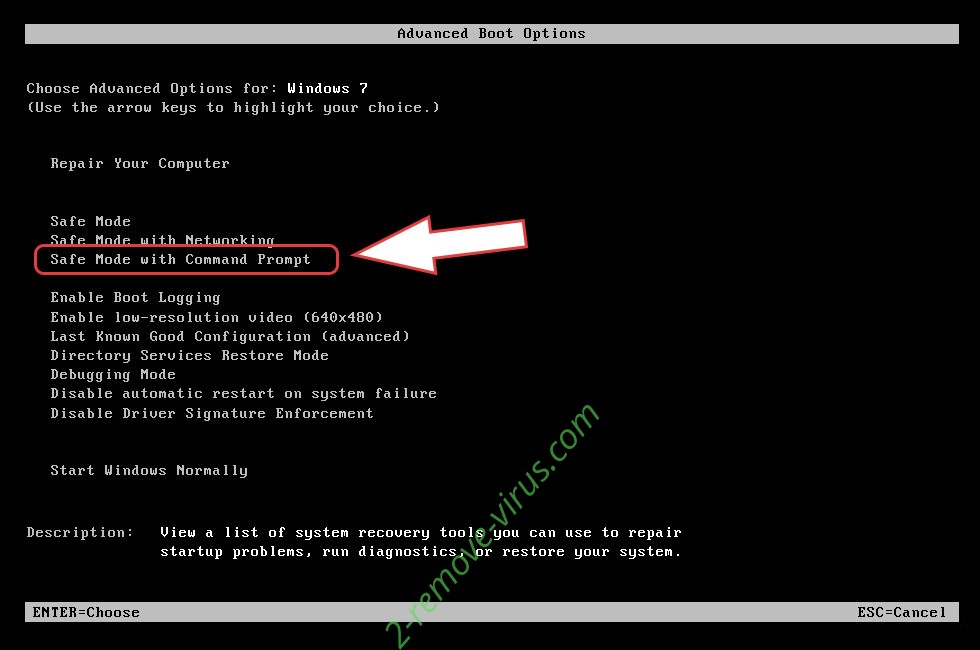
- Open your browser and download the anti-malware utility.
- Use the utility to remove Boop Ransomware
Remove Boop Ransomware from Windows 8/Windows 10
- On the Windows login screen, press the Power button.
- Tap and hold Shift and select Restart.

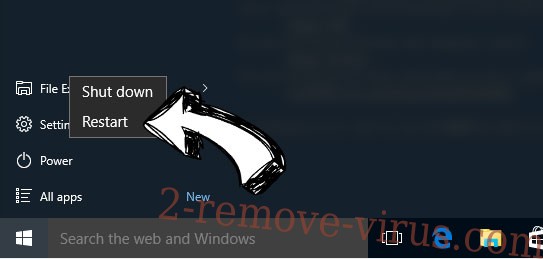
- Go to Troubleshoot → Advanced options → Start Settings.
- Choose Enable Safe Mode or Safe Mode with Networking under Startup Settings.

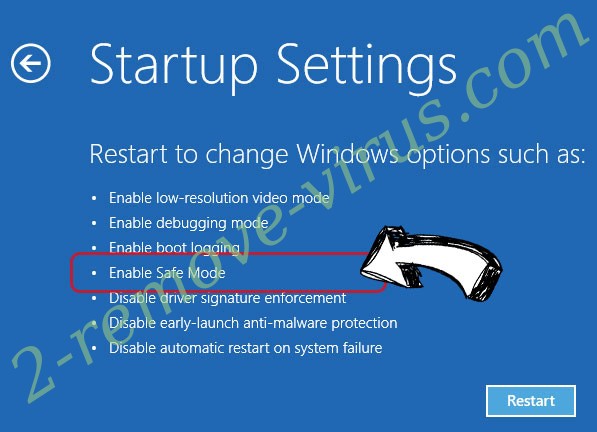
- Click Restart.
- Open your web browser and download the malware remover.
- Use the software to delete Boop Ransomware
Step 2. Restore Your Files using System Restore
Delete Boop Ransomware from Windows 7/Windows Vista/Windows XP
- Click Start and choose Shutdown.
- Select Restart and OK


- When your PC starts loading, press F8 repeatedly to open Advanced Boot Options
- Choose Command Prompt from the list.

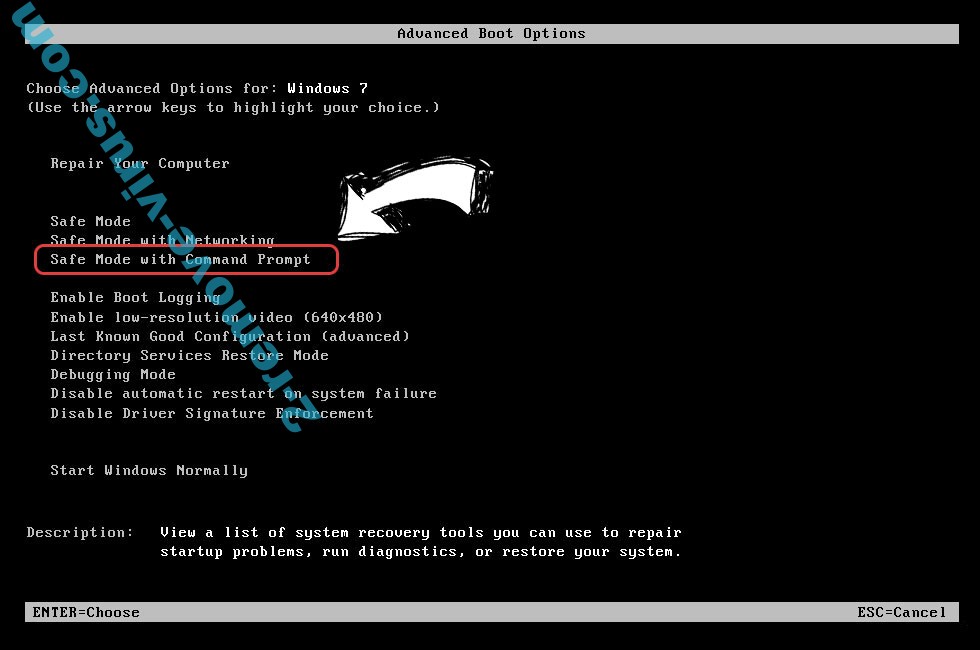
- Type in cd restore and tap Enter.

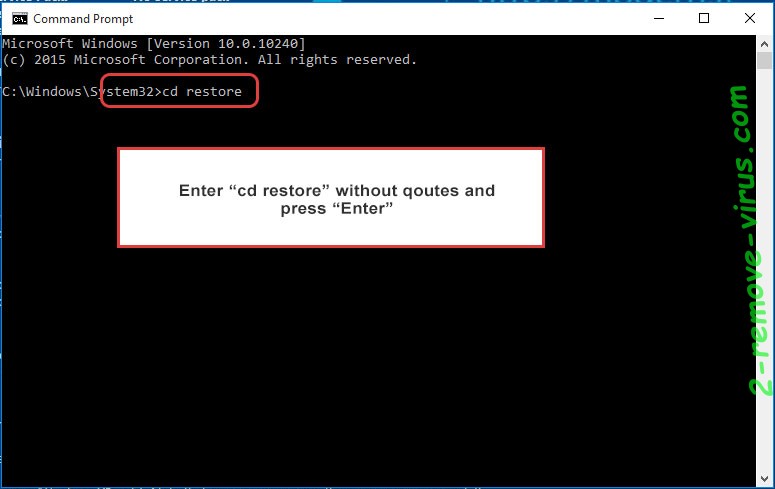
- Type in rstrui.exe and press Enter.

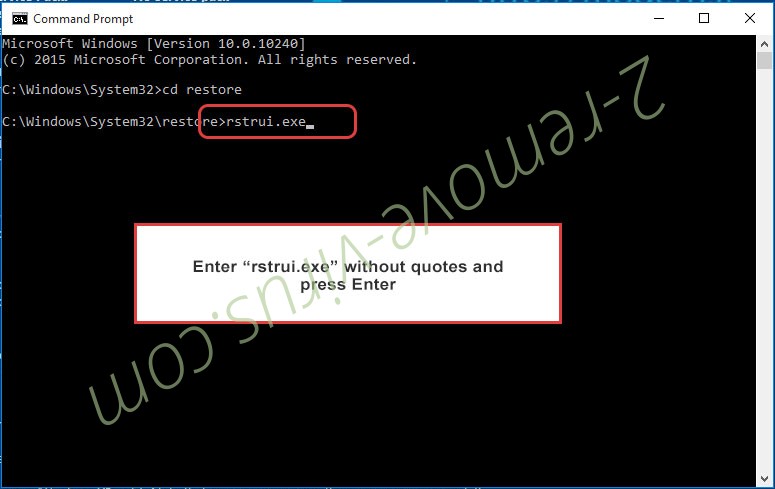
- Click Next in the new window and select the restore point prior to the infection.

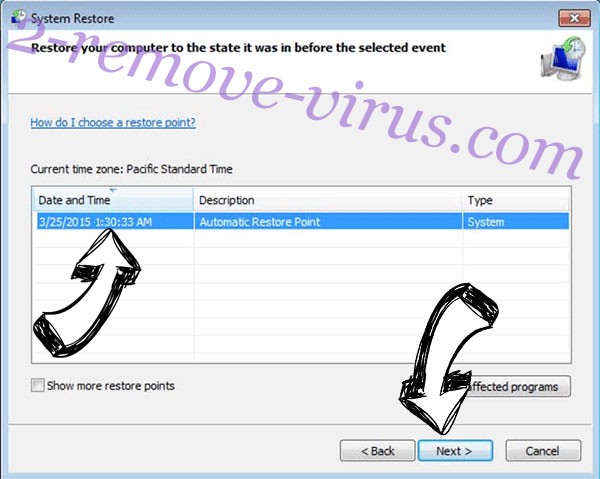
- Click Next again and click Yes to begin the system restore.

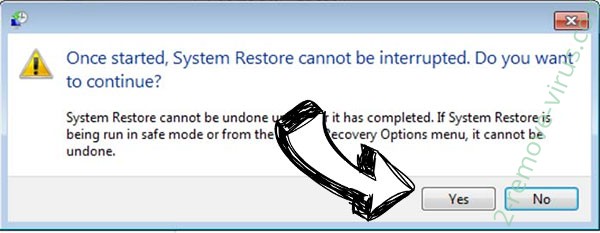
Delete Boop Ransomware from Windows 8/Windows 10
- Click the Power button on the Windows login screen.
- Press and hold Shift and click Restart.


- Choose Troubleshoot and go to Advanced options.
- Select Command Prompt and click Restart.

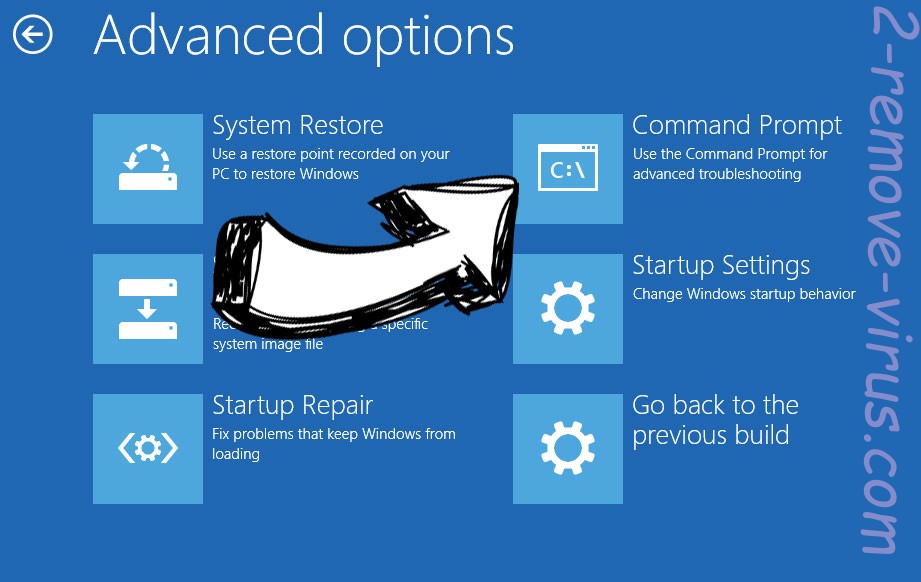
- In Command Prompt, input cd restore and tap Enter.


- Type in rstrui.exe and tap Enter again.


- Click Next in the new System Restore window.

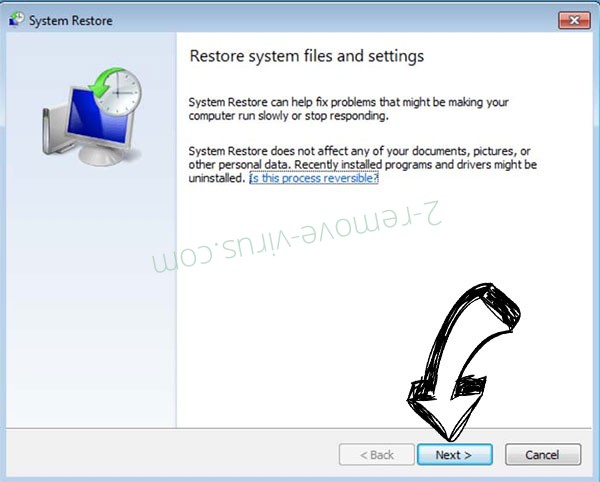
- Choose the restore point prior to the infection.


- Click Next and then click Yes to restore your system.


Site Disclaimer
2-remove-virus.com is not sponsored, owned, affiliated, or linked to malware developers or distributors that are referenced in this article. The article does not promote or endorse any type of malware. We aim at providing useful information that will help computer users to detect and eliminate the unwanted malicious programs from their computers. This can be done manually by following the instructions presented in the article or automatically by implementing the suggested anti-malware tools.
The article is only meant to be used for educational purposes. If you follow the instructions given in the article, you agree to be contracted by the disclaimer. We do not guarantee that the artcile will present you with a solution that removes the malign threats completely. Malware changes constantly, which is why, in some cases, it may be difficult to clean the computer fully by using only the manual removal instructions.
